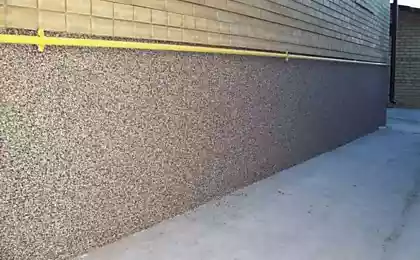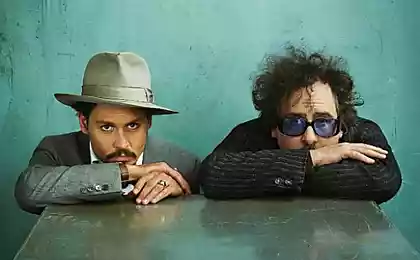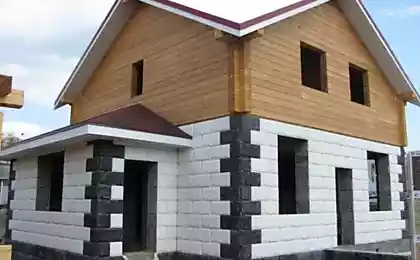155
How to fix the dowel in the wall from which the plaster falls
During repairs or installation works, a problem often arises: how to fix the dowel in a loose wall? In old houses, plaster is often as if it was made from the same sand. As a result, the wall crumbles, the fastener dangles, turns. And from the hole literally pours sand.

Do not refuse in this case the repair. But how then to attach lockers, shelves, mirrors, curtains and much more?

Let's look at a few methods. From grandfather’s advice to modern technologies and life hacks from experienced masters.
In Soviet times, there was no great choice of fasteners. Therefore, during the repair, everyone got out as much as they could. To firmly fix, for example, a heavy shelf or wash basin, a large hole was made in the plaster, a wooden cork was driven into it, and a screw was screwed into it.

Sometimes removing tiles in old houses, you can find traces of such holes under it. They look, I must admit, quite impressive. Some savvy masters for sealing the dowel in the wall wound on the fastener tape, polyethylene, inserted matches into the hole. But this method is only suitable for fastening the lightest objects.
Lifehacks masters
Modern technologies
Summing up, we note that in each case, the choice of fastening method depends on the looseness of the wall and the expected load. You can choose one, or you can combine them. The main thing is that the connection is strong and can carry the required load. We hope that now you can fix the dowel even in the loosest wall. Good luck and quick completion of the repair!

Do not refuse in this case the repair. But how then to attach lockers, shelves, mirrors, curtains and much more?

Let's look at a few methods. From grandfather’s advice to modern technologies and life hacks from experienced masters.
In Soviet times, there was no great choice of fasteners. Therefore, during the repair, everyone got out as much as they could. To firmly fix, for example, a heavy shelf or wash basin, a large hole was made in the plaster, a wooden cork was driven into it, and a screw was screwed into it.

Sometimes removing tiles in old houses, you can find traces of such holes under it. They look, I must admit, quite impressive. Some savvy masters for sealing the dowel in the wall wound on the fastener tape, polyethylene, inserted matches into the hole. But this method is only suitable for fastening the lightest objects.
Lifehacks masters
- Liquid nails
Drilled a hole with a diameter slightly larger than a dowel. Remove all the dust and remnants of plaster from the hole. You can vacuum.
Treat the hole to the full depth with acrylic deep penetration primer to fasten the loose plaster. For small diameter holes, it is easier to use cotton swabs. Let the primer dry for 2-6 hours (check the instructions).
Fill the prepared hole with liquid nails. Put the dowel in the hole. Wait for the glue to freeze completely. I just need to screw in the screw. Now the dowel is held in its place very firmly and will serve as a reliable fastener. - plaster
Similar method, but instead of glue we use plaster. Stir the cast with water until the consistency of liquid sour cream. Fill the resulting mixture with a large syringe (you can buy it at the pharmacy). Clean the dust hole. Fill it with liquid cast. Insert the dowel and wait for the cast to solidify completely. Turn the screw - it will hold no worse than in a brick.
Modern technologies
- Dome Molly
Dubel "Molly" resembles the principle of the folding umbrella and is often used when working with drywall. It is also suitable for loose plaster.
A metal sleeve is inserted into the hole. After that, a screw is screwed, which tightly opens the “petals” of the sleeve.
Unlike plastic fasteners, the dowel "Molly" is not subject to aging, and you can hang anything on it. - Chemical anchor
The most uncompromising option. If in this case the fastener and get out, it is only with a piece of wall. This technology has appeared relatively recently, but has already managed to win the love of users.
Chemical anchor (injection mass, gluing anchor) can be used for installation in hollow and loose bases, close to the corner, when greater resistance to loads (including vibrational ones) is required.
View this post on Instagram
A post shared by Alexander Smolin (@remontkv.pro)
The chemical anchor usually includes synthetic resin, hardener and filler. Structurally it looks like a cartridge with two compartments. A mixer is put on it, and then everything is inserted into a special gun.
So that the adhesive composition does not spread over the voids of the base, a plastic sleeve or a special metal sleeve is pre-installed into the hole.
Summing up, we note that in each case, the choice of fastening method depends on the looseness of the wall and the expected load. You can choose one, or you can combine them. The main thing is that the connection is strong and can carry the required load. We hope that now you can fix the dowel even in the loosest wall. Good luck and quick completion of the repair!
Dandy from Paris rejected my signature dishes, only one he liked.
Silent solid sign is not pronounced in any way, so we make mistakes in words.





























